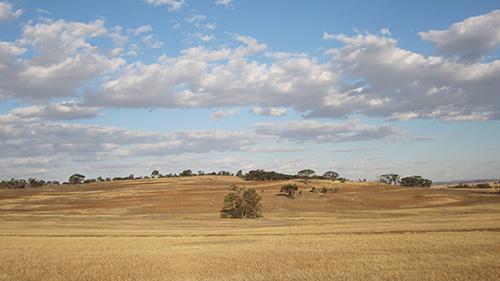
For many ecosystems worldwide, environmental deterioration has likely led to a point of no return; through intensive human use followed by abandonment, non-native species invasions, and/or off-site influences, among other factors, these ecosystems have crossed into new, unique states that are entirely different from any past or present ecosystem. System thresholds—such as pollutant loading, urbanization, or directional changes in temperature and precipitation—prevent strained species populations or altered landscapes from returning to their former, historical compositions.
These so-called “novel ecosystems” present a very real challenge to traditional notions of environmental restoration, which are often concerned with reverting to conditions that precede human disturbance. Within this context, novel ecosystems—by virtue of their tipped thresholds—appear to be an endgame in which restoration efforts are out of luck and out of time.
However, if we redefine our understanding and implementation of environmental restoration to take account of the barriers of novel ecosystems—if we transfer our focus from composition to function—recovery is again within sight.
SESYNC recently welcomed visiting scholar Dr. Michael Perring, Research Associate, School of Plant Biology, University of Western Australia, to our Annapolis facility in support of his continuing synthesis research on novel ecosystems. In his SESYNC Seminar on February 26, Dr. Perring introduced the concept of novel ecosystems, as well as an experiment that’s investigating the reframing of ecological restoration in an era of novel ecosystems.
The Ridgefield Multiple Ecosystem Services Experiment at the University of Western Australia’s Future Farm tests the utility of restoring for ecosystem function. The farmland, heavily altered by cropping and sheep grazing, is typified by ecosystem structures and functions unrecognizable to their pre-agricultural state. Led by Dr. Perring and Dr. Richard Hobbs, the research team is endeavoring to improve management practices of degraded agricultural landscapes through the restoration of ecosystem functions of particular value to land managers, policy makers, and the general public.
In 2010, Ridgefield’s 124 experimental plots were planted with 10 different combinations of eight species of native trees and shrubs, and categorized according to soil type, moisture content, and directional aspect so as to ensure geographic controls. The goal: to determine how these various vegetative combinations affect carbon sequestration, nutrient cycling, invasion resistance, pollination, and soil erosion prevention. Could these functions be restored to an ecologically degraded landscape?
While Ridgefield is a long-term project, early results tentatively confirm predictions that plots containing a higher number of species support increased functioning of multiple ecosystem services.
In a time of widespread and rapid environmental change, novel ecosystems are becoming increasingly common. Traditional restoration efforts remain relevant to ecological communities that have not yet reached a tipping point—but have failed when applied to novel ecosystems. The research at Ridgefield addresses an emergent need for new goals and methods in restoration practice, and highlights an opportunity for synthesis research to both extend the implication of Ridgefield and identify data gaps among experiments concerned with similar questions.
For Dr. Perring’s research, this opportunity means synthesizing social and regulatory implications for novel ecosystems with ecological factors. During his time in Annapolis, Dr. Perring extended his research by working with SESYNC staff and postdoctoral fellows to identify how social variables (e.g., differing organizational, community, or business goals) and regulatory frameworks (which, because they are often far less dynamic than ecological systems, are frequently a restrictive factor) affect ecological restoration of novel ecosystems. For natural scientists, issues of human behavior and values are less familiar than those of biologic composition or function. However, because novel ecosystems are driven and maintained by anthropogenic influences and are therefore an interlinked system of people and nature, social questions must be asked in order to generate insights into the systems’ management and restoration. We at SESYNC are hopeful that Dr. Perring’s time with us will help him identify new intellectual and policy-relevant challenges to the study and management of novel ecosystems.
Further reading:
Hobbs R. J., Higgs E. S. & Hall C. (Eds.). Novel Ecosystems: Intervening in the New Ecological World Order. John Wiley & Sons., 2013.
Perring M. P., Standish R. J., Hulvey K. B., Lach L., Morald T. K., Parsons R., Didham R. K. & Hobbs R. J. (2012). The Ridgefield Multiple Ecosystem Services Experiment: Can restoration of former agricultural land achieve multiple outcomes? Agriculture, Ecosystems & Environment 163 (2012): 14–27. http://dx.doi.org/10.1016/j.agee.2012.02.016.